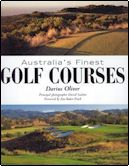Feature Course
Commonwealth Golf Club
| Description | A private club, open to members and invited guests only. |
| Address |
Glennie Avenue
South Oakleigh VIC 3167 Australia |
| Club Phone | (03) 9575 0444 |
| Club House | full facilities. |
| Green Fees | A private club, open to members and invited guests only. Members of Golf Clubs from overseas and interstate may apply to the Manager to establish playing conditions. Introduction from home club required. |
Course information sourced from non-current edition of The GOLF Course Guide, Click here for details
To update information please contact us
2025 GOLF Course Guide OUT NOW!
Course Details
| Course | COMMONWEALTH |
| Holes | 18 |
| Length | 6380 |
| Golf Digest Ranking (Private Club – not ranked by The GOLF Course Guide) | 31 |
| Designer | Sam Bennett, Sloan Morpeth |
Course Review
COMMONWEALTH GOLF CLUB - EXCLUSIVE REVIEW
by Darius Oliver, from Australia's Finest Golf Courses
Commonwealth Golf Club
Course Opened – 1921
Designer – Sam Bennett, Charles Lane, Sloan Morpeth

Commonwealth was formed in 1920 when members of the Waverley Golf Club, looking to move to the prospering Sandbelt, purchased the clubs current site close to The Metropolitan Golf Club. Inaugural professional, Sam Bennett designed the initial twelve holes before club captain, and budding amateur architect Charles Lane finished off the eighteen. Lane also touched up the greens and was even seen during construction digging some of the famous greenside bunkers. Unusually for its vintage the course then evolved primarily without the aid of high profile, high price golf course architects but instead thanks to the long history of sound internal club management.
What club pioneers created was extraordinary and based around the strict adherence to the simplest values of strategic design. Beautifully bunkered and exquisitely contoured the titled greens are designed to reward players who can approach from the best angles. Accordingly the fairways were then shaped and designed to create clear choices from the tee according to ones ability. This design philosophy is best highlighted on the superb par fours, the classic example being the famous 16th. The hole shapes left around a fairway lake with a slippery green guarded by a fearsome right side bunker. The angle of the green rewards the brave golfer who can drive close to the water with a much easier approach free from the menacing bunker.
Another standout, the mid length par four 11th is played around corner bunkers and sweeps uphill toward a large tiered green, with a steep slope and deep bunkering. The final two holes are also outstanding and form part of a much-celebrated closing stretch. Following the world class 16th is an exceptional short par four which rises gently to a delicious green with sharp contours. The overzealous beware, as pitch shots in from the wrong angle here are devilishly difficult. The 18th, with its modern length and classical bunkering, is an excellent finish to the round and the scene of many last hole heroics.
For many decades the members acted as custodians of their course, successfully able to maintain the integrity of its timeless design ‘in-house’. The greatest period of reform came during the 1960’s when additional land allowed long time club Secretary Sloan Morpeth to redesign the 10th and 11th holes as well as a number of green sites. These Morpeth changes together with additional alterations by subsequent committees enhanced the experience and helped the course develop its distinct character.
In recent times this very character was threatened when technological advancements and increased competition were thought to have rendered the layout obsolete. The club abandoned its ‘internal management’ policy and instead embarked on a program to ‘modernise’ the course. First came the loss of the beloved driveable opening hole, which was fondly remembered but underweight according to a committee who added length and created a dogleg. Architect Kevin Hartley then built a new par three in the 1990’s to replace the popular short 7th hole and made further alterations which added a total of 200 metres to the length of the course. An extensive tree planting program was also continued which has yielded a beautiful collection of native flora but also caused problems with intruding limbs interfering with the line of play on several holes.
The contemporary Commonwealth is still an incredible golf course despite these modern changes affecting the flow of holes and doing little to improve the experience. There remains a stack of wonderful moments, world class holes on both sides and the original greens and bunkers are still as strategic and attractive as any on the Sandbelt.
Commonwealth’s continued success can be directly attributed to the design philosophies implemented by the club’s early members and although some recent alterations appear out of character, any analysis of today’s course stirs great passion among a justifiably proud membership. Indeed if one can ignore fond reflection and examine what ‘still is’, rather than remember what ‘once was’, then the course measures up favourably against most in Australia.
Revered internationally yet often chastised locally, Commonwealth remains an icon of the Sandbelt and one of our foremost classic courses.
 This review features in Australia's Finest Golf Courses (RRP $49.95).
This review features in Australia's Finest Golf Courses (RRP $49.95).
For more details on the book click here.
Green Fee access - Access to this private club is restricted to members, guests of members and Golf Club Members from Interstate and Overseas upon payment of the applicable green fee. ausgolf can advise about playing this course, or provide additional travel advice, so please e-mail travel@ausgolf.com.au


